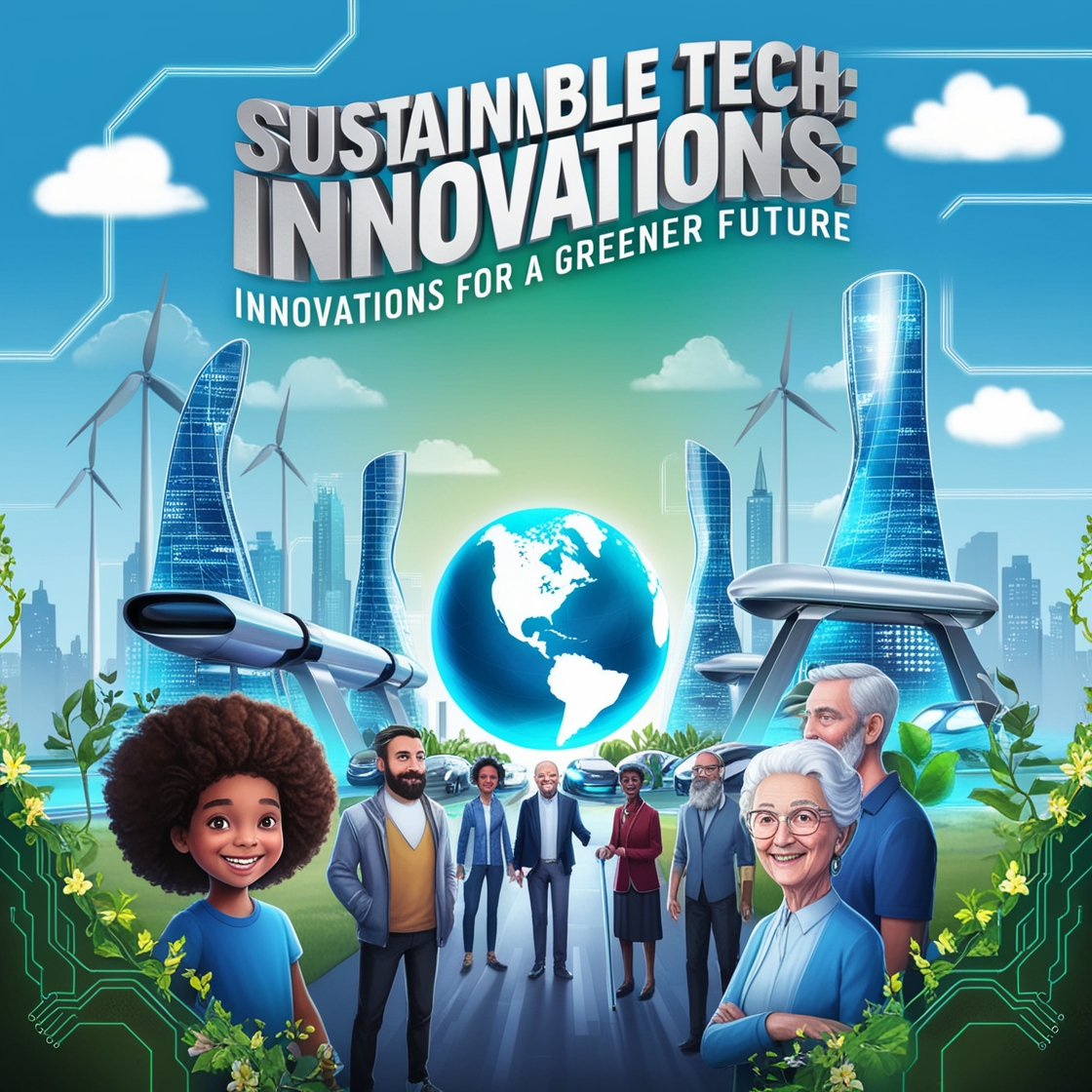1. Renewable Energy Sources
Renewable energy has been one of the most transformative shifts in sustainable technology. Solar, wind, and hydropower are becoming more efficient and affordable, offering viable alternatives to fossil fuels. Advanced solar panels, including thin-film solar cells and bifacial solar panels, maximize the capture of sunlight, even in low-light conditions. Wind energy has also seen technological improvements, with offshore wind farms and bladeless turbines that minimize impact on bird populations and local ecosystems.
Battery technology is evolving in parallel with renewable energy, enabling more efficient energy storage. Lithium-ion batteries are being optimized for longer life and higher capacity, while emerging technologies, like solid-state and flow batteries, show promise for even greater energy storage. Together, renewable energy and battery advancements are helping achieve a sustainable grid system, reducing dependency on carbon-based fuels and lowering emissions globally.
2. Sustainable Agriculture
Modern agriculture is responsible for significant greenhouse gas emissions, but sustainable technologies are helping farmers reduce their environmental footprint. Precision agriculture uses GPS, IoT sensors, and machine learning to monitor crops and soil conditions, enabling farmers to apply water, fertilizers, and pesticides only when and where needed. This reduces waste, conserves water, and minimizes harmful runoff.
Vertical farming is another transformative technology. These indoor farms grow crops in stacked layers, using controlled environments and LED lighting that replicates sunlight. By growing produce closer to urban areas, vertical farms reduce transportation costs and emissions, while using up to 95% less water than traditional farms. Additionally, lab-grown meat and plant-based proteins offer a sustainable alternative to livestock farming, which contributes heavily to greenhouse gas emissions.
3. Eco-Friendly Transportation
Transportation contributes significantly to global emissions, but sustainable technologies are making a difference. Electric vehicles (EVs) are perhaps the most prominent example, with companies continually improving battery life, charging infrastructure, and affordability. In the coming years, EVs are expected to become the norm, with various governments around the world mandating phased-out production of combustion engines.
In addition to electric cars, green transportation now includes electric bikes, scooters, and even electric public transportation systems. Hydrogen fuel cells are another promising technology, particularly for heavy-duty vehicles that are challenging to electrify due to battery weight constraints. Innovations in aviation, such as biofuels and electric aircraft, are also in development to make air travel more sustainable.
4. Green Building Technologies
Buildings account for a significant portion of energy use and emissions, but green building technologies are transforming the industry. Smart glass windows that adjust their tint based on sunlight levels, efficient HVAC systems, and automated lighting are all helping reduce energy use. Low-carbon concrete, created from sustainable materials, is another breakthrough that cuts emissions by up to 50% compared to traditional cement.
Green roofs and living walls are also gaining popularity. These systems, which involve vegetation growing on roofs or building facades, provide natural insulation, absorb CO₂, and reduce the urban heat island effect. Smart building designs incorporate these elements with renewable energy sources and IoT-enabled systems to optimize energy use, reduce costs, and lessen environmental impacts.
5. Circular Economy and Waste Management
The shift toward a circular economy is a critical aspect of sustainable technology, aiming to reduce waste by keeping products, materials, and resources in use for as long as possible. Recycling and repurposing technologies have advanced, allowing for the conversion of plastics, metals, and other materials back into usable forms. Chemical recycling, for instance, breaks down plastics at a molecular level, producing materials that are nearly identical to virgin plastics.
Waste-to-energy technologies are also emerging, which convert waste materials into electricity or biofuel. Anaerobic digestion, a process that uses microbes to break down organic matter, produces biogas that can be used as a renewable energy source. These waste management technologies reduce landfill use and provide an alternative source of clean energy.
6. Water Conservation and Purification
With water scarcity affecting millions globally, sustainable water technologies are essential. Innovations in desalination, such as reverse osmosis and solar-powered desalination, make it possible to convert seawater into potable water. More energy-efficient desalination processes are being developed to reduce their environmental impact, bringing the promise of abundant, clean drinking water to arid regions.
Water purification and wastewater treatment technologies are also advancing. Phytoremediation, which uses plants to remove pollutants from water, is a promising method for cleaning up wastewater naturally. Additionally, smart irrigation systems for agriculture use real-time data on soil moisture and weather to optimize water usage, conserving water without compromising crop yields.
7. Carbon Capture and Storage
Carbon capture and storage (CCS) technologies capture CO₂ emissions from industrial sources and store them underground or repurpose them for commercial use. This approach prevents CO₂ from entering the atmosphere and contributes to reducing the overall carbon footprint. Recent advancements in direct air capture (DAC) are also making it possible to remove CO₂ directly from the atmosphere, which is vital for achieving net-zero emissions.
Carbon utilization technologies are also on the rise, turning captured CO₂ into valuable products like synthetic fuels, construction materials, and even food. These technologies not only reduce emissions but also create a closed-loop system, making industrial processes more sustainable.
Conclusion: The Road to a Greener Future
Sustainable technology holds immense potential for shaping a cleaner, greener, and more resilient future. As these technologies continue to advance, they offer innovative solutions to pressing environmental challenges. By investing in sustainable tech and supporting green practices, we are not only addressing climate change but also creating a healthier planet for generations to come. Every step toward sustainability, from adopting renewable energy to conserving water, moves us closer to a world where technology and the environment coexist harmoniously.
The future of sustainable technology is bright, and with continued innovation, we can look forward to a world that prioritizes both progress and the planet.
